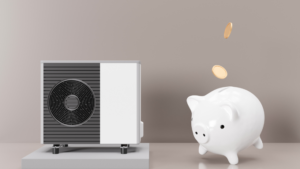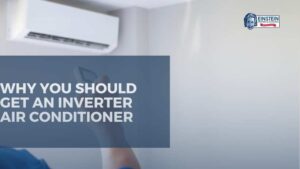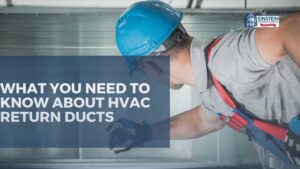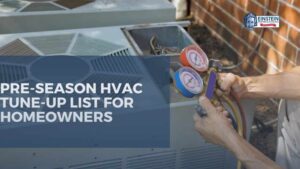As winter descends, the last thing you want is a frozen heat pump leaving you in your cold Bend home. Heat pumps are essential for maintaining a cozy indoor environment, but they are not immune to freezing issues. In this comprehensive guide, we will explore the reasons why heat pumps freeze, identify signs of a frozen unit, delve into troubleshooting steps, and provide preventive maintenance tips to keep your system running smoothly throughout the winter.
Reasons why heat pumps freeze
1. Insufficient Refrigerant Levels
- Low refrigerant levels can lead to decreased heat pump efficiency, causing the coils to freeze.
- The refrigerant is crucial for absorbing and releasing heat during the heat pump’s operation. When levels are low, the system can’t effectively transfer heat, resulting in freezing.
2. Inadequate Airflow
- Restricted or insufficient airflow can impede the heat exchange process and lead to freezing.
- Factors such as blocked air filters, obstructed vents, or issues with the blower fan can reduce airflow, causing the system to operate under stressful conditions.
3. Thermostat Issues
- Incorrect thermostat settings or malfunctions can cause the heat pump to run continuously, leading to freezing.
- Ensure that your thermostat is set to the appropriate temperature and consider upgrading to a programmable thermostat for better control.
4. Outdoor Unit Obstructions
- Accumulated snow, ice, or debris around the outdoor unit can impede proper airflow and cause the heat pump to freeze.
- Regularly clear the area around the outdoor unit to allow for unobstructed air circulation.
5. Defrost Control Problems
- Malfunctions in the defrost control mechanism can prevent the heat pump from effectively entering defrost mode.
- The defrost cycle is essential for melting accumulated ice on the outdoor coils. If it fails, the unit may freeze over time.
Signs of a Frozen Heat Pump
1. Reduced Heating Efficiency
- A decline in heating efficiency is one of the earliest indicators that your heat pump might be grappling with freezing issues.
- As the coils freeze, the heat pump’s ability to absorb and transfer heat diminishes, resulting in an observable drop in its heating performance.
Tip: Keep a keen eye on your energy bills. An unexplained increase may be a signal of reduced efficiency and increased energy consumption due to a frozen heat pump.
2. Frost or Ice Accumulation on Coils
- Visual inspection of the outdoor unit may reveal a layer of frost or ice on the coils.
- This accumulation is a tangible sign that the heat pump is struggling to maintain its operational temperature, leading to freezing.
Tip: Gently touch the coils. If they feel icy or extremely cold, it’s a clear indication of a frozen heat pump.
3. Strange Sounds During Operation
- Unusual noises emanating from your heat pump during operation can be an auditory clue to potential freezing.
- As ice forms on critical components, it can cause banging, clanging, or other irregular sounds indicative of stress within the system.
Tip: Don’t ignore unusual sounds. Prompt investigation and resolution can prevent further damage to the heat pump.
4. Water Leakage Around the Unit
- When a frozen heat pump begins to thaw, the melting ice turns into water, leading to potential leakage around the unit.
- Puddles or drips near the heat pump are visible signs that the unit has experienced freezing.
Tip: Place a tray or container under the unit if you suspect a frozen pump. This can help contain any water leakage and prevent damage to the surrounding area.
5. Inconsistent Airflow from Vents
- A significant reduction in warm air flowing from the vents could be indicative of a frozen heat pump.
- As the system struggles to extract heat from the environment, the airflow diminishes, leaving you with insufficient heating in your living spaces.
Tip: Perform a simple check by placing your hand near the vents. If the airflow feels weak or inconsistent, it’s time to investigate the possibility of a frozen heat pump.
Recognizing these nuanced signs of a frozen heat pump is crucial for taking swift corrective action. Ignoring these indicators may lead to prolonged discomfort, increased energy bills, and potential long-term damage to your HVAC system. Regular vigilance and proactive troubleshooting will ensure that your heat pump operates seamlessly, providing the warmth and comfort your home deserves during the winter months.
6. Unexplained Increase in Energy Bills
- A sudden and unexplained spike in your energy bills can be a financial sign of a frozen heat pump.
- When the system is forced to work harder due to reduced efficiency from freezing, it consumes more energy, reflecting in higher monthly bills.
Tip: Keep track of your energy consumption and bills. If there’s a notable increase without a corresponding change in usage patterns, it might be time to investigate the health of your heat pump.
7. Ice Buildup on Refrigerant Lines
- While inspecting the outdoor unit, pay attention to the refrigerant lines connecting to the heat pump.
- Visible ice buildup on these lines is a telltale sign of freezing, indicating that the refrigerant is not circulating properly.
Tip: Exercise caution when examining the refrigerant lines. If they appear frosted or iced over, it’s a clear indication that the heat pump is struggling and requires attention.
After identifying the possible signs of a frozen heat pump, we discuss the best steps on how to fix your frozen heat pump.
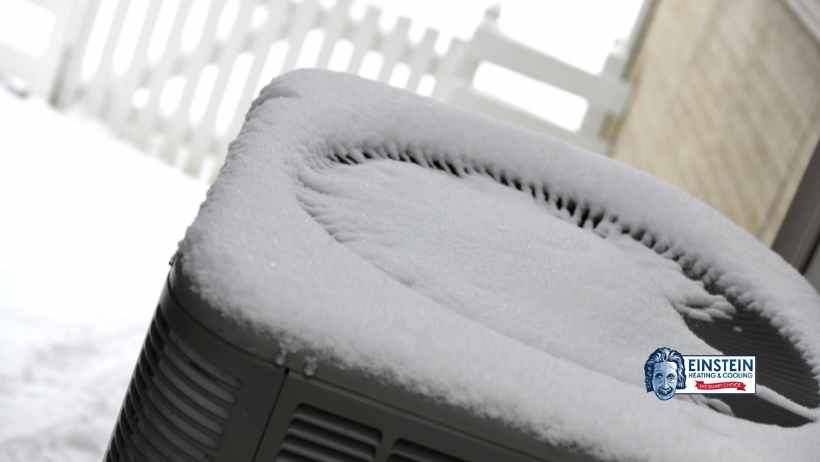
Troubleshooting Steps for a Frozen Heat Pump
1. Turn Off the Heat Pump
- When you suspect or confirm that your heat pump is frozen, the first and most crucial step is to turn off the system.
- This prevents further stress on the components and allows the unit to naturally thaw.
Tip: Give the heat pump ample time to defrost before attempting any troubleshooting. Rushing the process may lead to additional complications.
2. Check and Replace Air Filters
- Begin by inspecting the air filters for any signs of blockage or dirt accumulation.
- Dirty filters restrict airflow, contributing to freezing. Replace filters promptly to ensure unobstructed airflow.
Tip: Regularly check and replace air filters every three months, or more frequently if you have pets or live in dusty environments. Get a reliable heat pump service if your heat pump is broken beyond DIY repairs.
3. Clear Outdoor Unit
- Carefully remove accumulated snow, ice, and debris from around the outdoor unit.
- Ensure there is a clear space around the heat pump to facilitate proper airflow, preventing future freezing issues.
Tip: Use a soft brush or broom to gently clear away snow and ice. Avoid sharp objects that could damage the unit’s components.
4. Verify Refrigerant Levels
- Consult with a professional HVAC technician to check the refrigerant levels in your heat pump.
- Maintaining the correct refrigerant amount is critical for preventing freezing and ensuring efficient heat exchange.
Tip: Refrigerant handling requires expertise. Leave this task to a qualified technician to avoid safety risks and potential damage to your HVAC system.
5. Inspect Thermostat Settings
- Verify that the thermostat is set to the appropriate temperature for your comfort and the efficient operation of the heat pump.
- If thermostat issues are suspected, consider recalibrating or replacing the unit for accurate temperature control.
Tip: Programmable thermostats offer enhanced control and energy efficiency. Consider upgrading for better temperature management.
6. Examine Defrost Control System
- Test the defrost control system to ensure it is functioning correctly.
- The defrost cycle is crucial for melting accumulated ice on the outdoor coils. If issues persist, seek assistance from a qualified technician to repair or replace the defrost control mechanism.
Tip: Regularly check the defrost cycle during colder months to ensure it activates as needed. Malfunctions in this system can lead to freezing.
7. Inspect the Blower Fan
- Examine the blower fan for any signs of malfunction or obstruction.
- A faulty blower fan can contribute to freezing by reducing airflow. Ensure the fan is clean, well-lubricated, and operating smoothly.
Tip: Schedule regular maintenance checks for the blower fan to keep it in optimal condition and prevent freezing issues.
8. Check for Air Duct Issues
- Inspect the air ducts for any leaks, blockages, or damage.
- Issues with the ductwork can compromise airflow, leading to freezing. Seal any leaks and clear any obstructions to restore proper system function.
Tip: Schedule professional duct inspections periodically to identify and address potential issues before they impact the heat pump.
9. Monitor the Outdoor Temperature
- Be mindful of the outdoor temperature. Extremely low temperatures can contribute to freezing, even with a properly functioning heat pump.
- Consider using additional heating sources during severe cold snaps to support the heat pump.
Tip: If you experience prolonged periods of extreme cold, investing in a heat pump specifically designed for cold climates may be beneficial. You may also invest in a furnace by using this guide on the difference between a heat pump and a furnace.
Preventive Maintenance Tips for Avoiding Frozen Heat Pumps
1. Regularly Replace Air Filters
- Establish a routine for checking and replacing air filters at least every three months.
- Clean filters promote unrestricted airflow, reducing the likelihood of freezing.
2. Keep the Outdoor Unit Clear
- Regularly clear snow, ice, and debris from around the outdoor unit.
- Create a clear perimeter to facilitate proper airflow and prevent the accumulation of ice.
3. Schedule Professional Inspections
- Arrange for annual professional inspections by a qualified HVAC technician from Einstein Heating and Cooling.
- Regular maintenance can identify potential issues before they escalate, ensuring a well-functioning heat pump in your Bend, Oregon home throughout the winter.
4. Install a Programmable Thermostat
- Upgrade to a programmable thermostat to enhance control over your heat pump.
- Programmable thermostats allow for efficient temperature management, preventing unnecessary strain on the system.
5. Invest in a Winter-Ready Heat Pump Cover
- Consider investing in a heat pump cover designed for winter use.
- A cover can protect the unit from extreme weather conditions, reducing the risk of freezing.
In conclusion
A frozen heat pump can be a frustrating and inconvenient problem during the winter months. By understanding the factors that contribute to freezing, recognizing the signs, and following the troubleshooting and preventive maintenance tips outlined in this guide, you can ensure your heat pump operates efficiently and keeps your home comfortably warm throughout the colder seasons. Regular care and attention as well as maintenance from professionals at Einstein Heating and Cooling will not only prevent freezing issues but also extend the lifespan of your heat pump, providing reliable heating for years to come.


